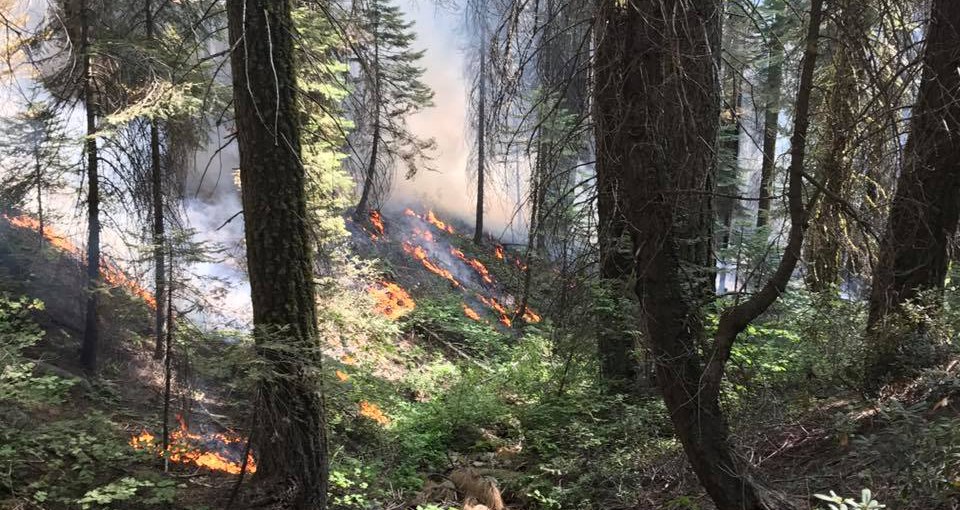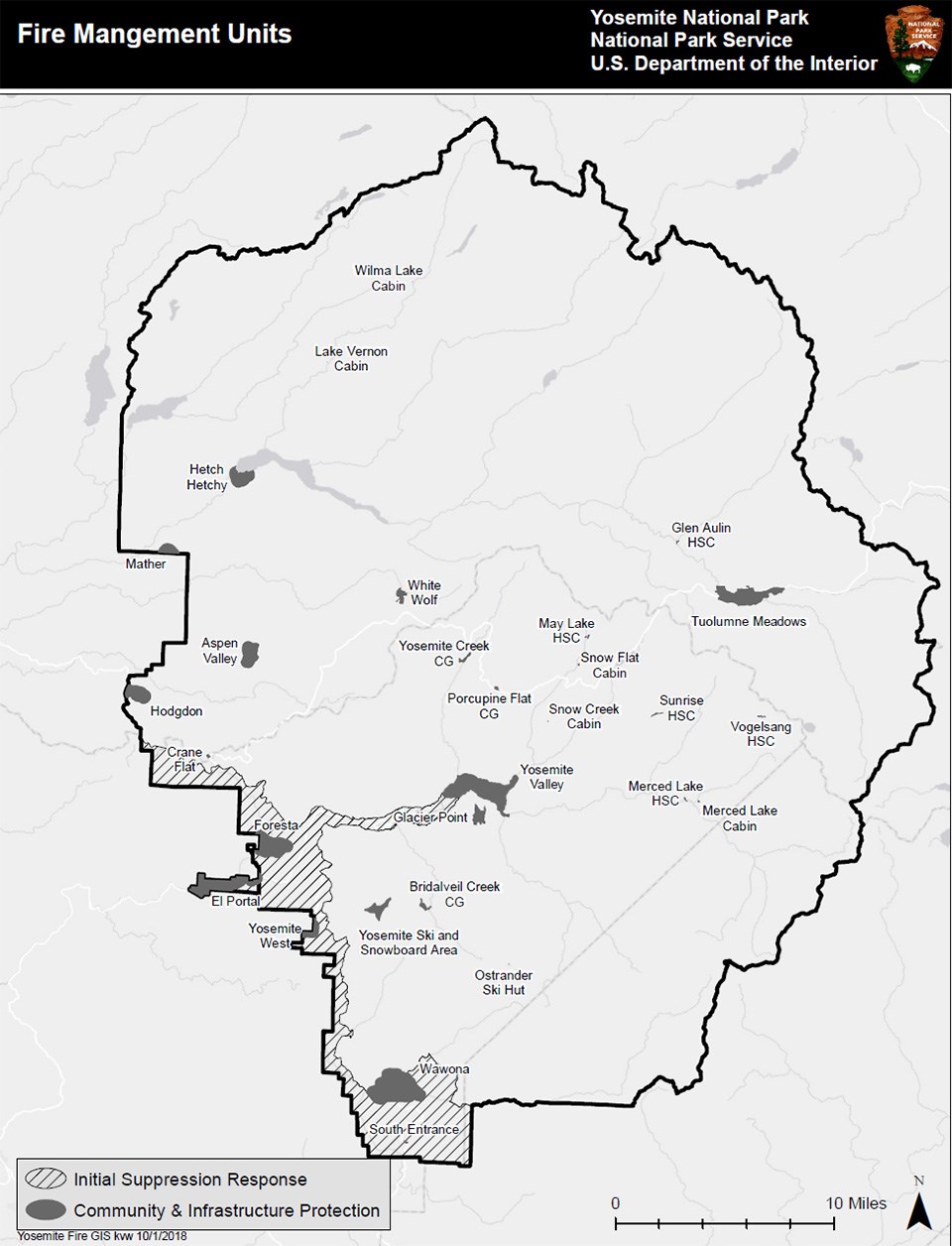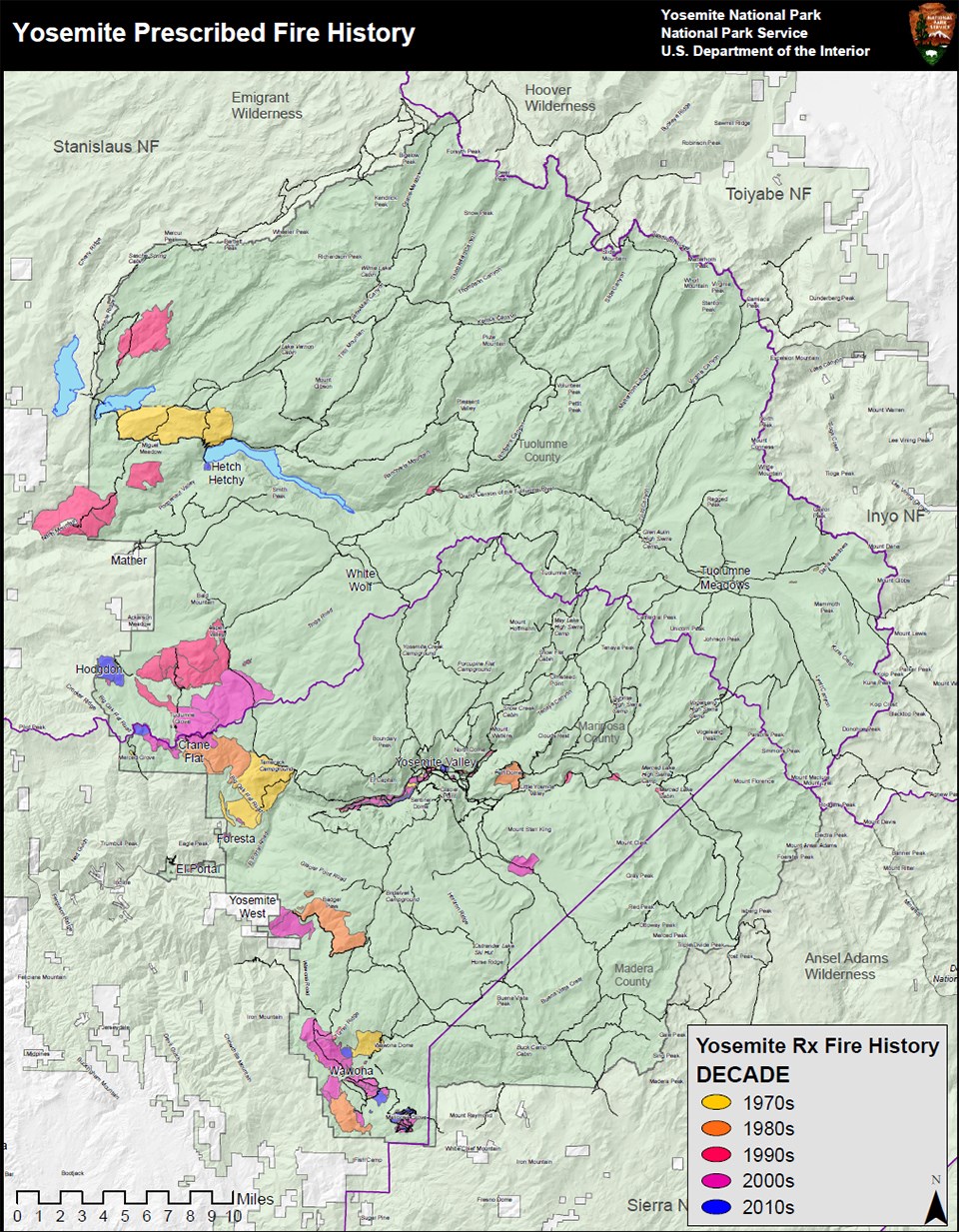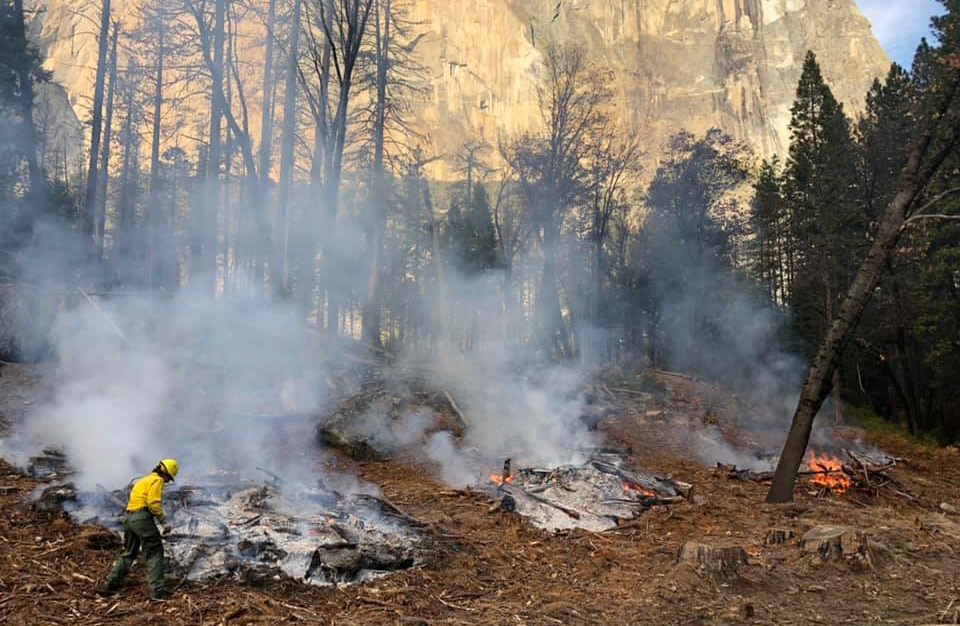
Yosemite's fire management program is designed to balance the protection of life, property, and natural and cultural resources with the continuation of fire as a natural process. Fire managers use three tools to mimic fire's natural function in the ecosystem: managing wildfire for resource and protection objectives, prescribed fire, and mechanical thinning and pile burning. While visiting Yosemite, you may see evidence of any of these practices. Managing WildfireManaging Wildfire for Resource BenefitsThunderstorms are common during summer and fall in the Sierra Nevada. Each year, many lightning strikes result in wildfires, some of which are managed for the benefit of natural and cultural resources. Ecological benefits include species diversity and landscape resiliancy. Visitors to Yosemite may see smoke or other evidence of these fires while they are in the park. Managing Fire for Protection BenefitsWhen wildfires threaten life or property they are suppressed. Fire Management UnitsThe majority of Yosemite National Park is managed as wilderness, where natural fuel loads exist and past fire suppression efforts have had little impact. Natural wildfires may be permitted to burn in this region under specific conditions, while monitored by park staff. In making these decisions, managers consider fire behavior, fuel loads, weather conditions, air quality, and potential threats to people and property. 
Prescribed FirePrescribed fires are used to mimic the natural presence of fire in an ecosystem. They are ignited under optimal conditions by qualified park staff, and they remove dead and overgrown vegetation that could contribute later to a more severe fire. A Prescription for FireA fire’s prescription is the window within which a fire may be ignited. The timing and scheduling of these fires depends on a variety of factors, including fuel conditions, weather, air quality, and other events occurring in the park. The conditions are selected to maximize the ability to control the fire and minimize smoke in local communities. These fires are intentionally set to meet certain objectives and achieve specific goals, such as protecting a developed area from future fires, or burning a section of forest that has become overgrown. Prescribed fire helps reduce heavy fuel loads while simultaneously opening the conifer forest structure and maintaining the health of meadow habitats. Fire is also used to enhance native plant communities, cultural landscapes, and improve wildlife habitat. Another goal is to provide defensible space for communities and developed areas within and surrounding the park. Since the 1970s, park managers have been using prescribed fire and managed lightning fire to help achieve these goals. 
Mechanical Thinning and Pile BurningEach year, Yosemite removed dead and down vegetation around park communities in an effort to reduce hazardous fuels. This creates what is known as "defensible space" around structures in the event of an unwanted fire, which can help firefighters defend these buildings and communities. This process, known as mechanical thinning, is also used to reduce heavy accumulation of fuels in any forested area, which can help prevent larger fires by removing "ladder fuels" that carry fire from the forest floor into the canopy of mature, overstory trees. 
Fire Management Videos
|
Last updated: July 22, 2023

